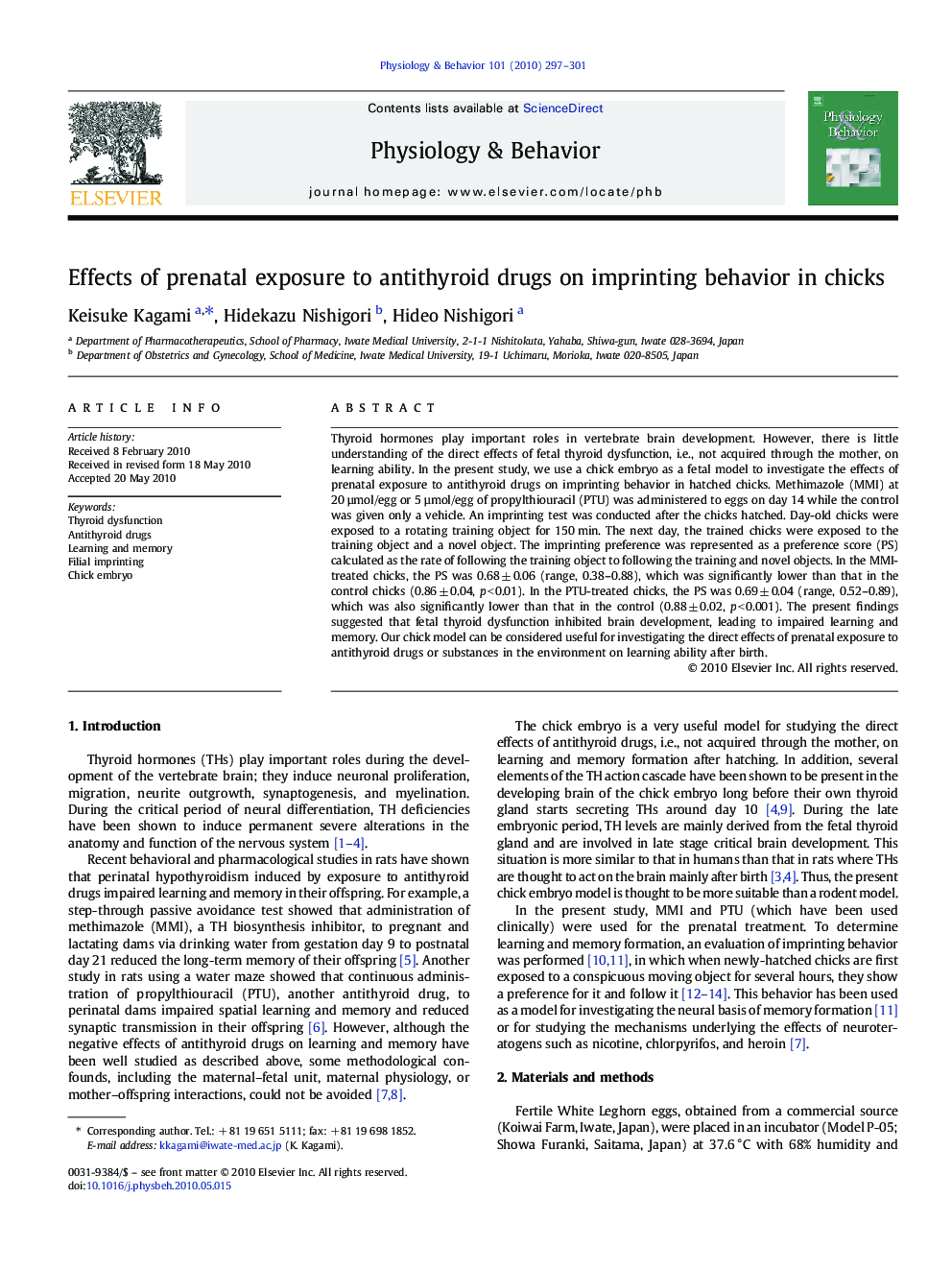| کد مقاله | کد نشریه | سال انتشار | مقاله انگلیسی | نسخه تمام متن |
|---|---|---|---|---|
| 2844782 | 1166363 | 2010 | 5 صفحه PDF | دانلود رایگان |

Thyroid hormones play important roles in vertebrate brain development. However, there is little understanding of the direct effects of fetal thyroid dysfunction, i.e., not acquired through the mother, on learning ability. In the present study, we use a chick embryo as a fetal model to investigate the effects of prenatal exposure to antithyroid drugs on imprinting behavior in hatched chicks. Methimazole (MMI) at 20 µmol/egg or 5 µmol/egg of propylthiouracil (PTU) was administered to eggs on day 14 while the control was given only a vehicle. An imprinting test was conducted after the chicks hatched. Day-old chicks were exposed to a rotating training object for 150 min. The next day, the trained chicks were exposed to the training object and a novel object. The imprinting preference was represented as a preference score (PS) calculated as the rate of following the training object to following the training and novel objects. In the MMI-treated chicks, the PS was 0.68 ± 0.06 (range, 0.38–0.88), which was significantly lower than that in the control chicks (0.86 ± 0.04, p < 0.01). In the PTU-treated chicks, the PS was 0.69 ± 0.04 (range, 0.52–0.89), which was also significantly lower than that in the control (0.88 ± 0.02, p < 0.001). The present findings suggested that fetal thyroid dysfunction inhibited brain development, leading to impaired learning and memory. Our chick model can be considered useful for investigating the direct effects of prenatal exposure to antithyroid drugs or substances in the environment on learning ability after birth.
Journal: Physiology & Behavior - Volume 101, Issue 2, 1 September 2010, Pages 297–301